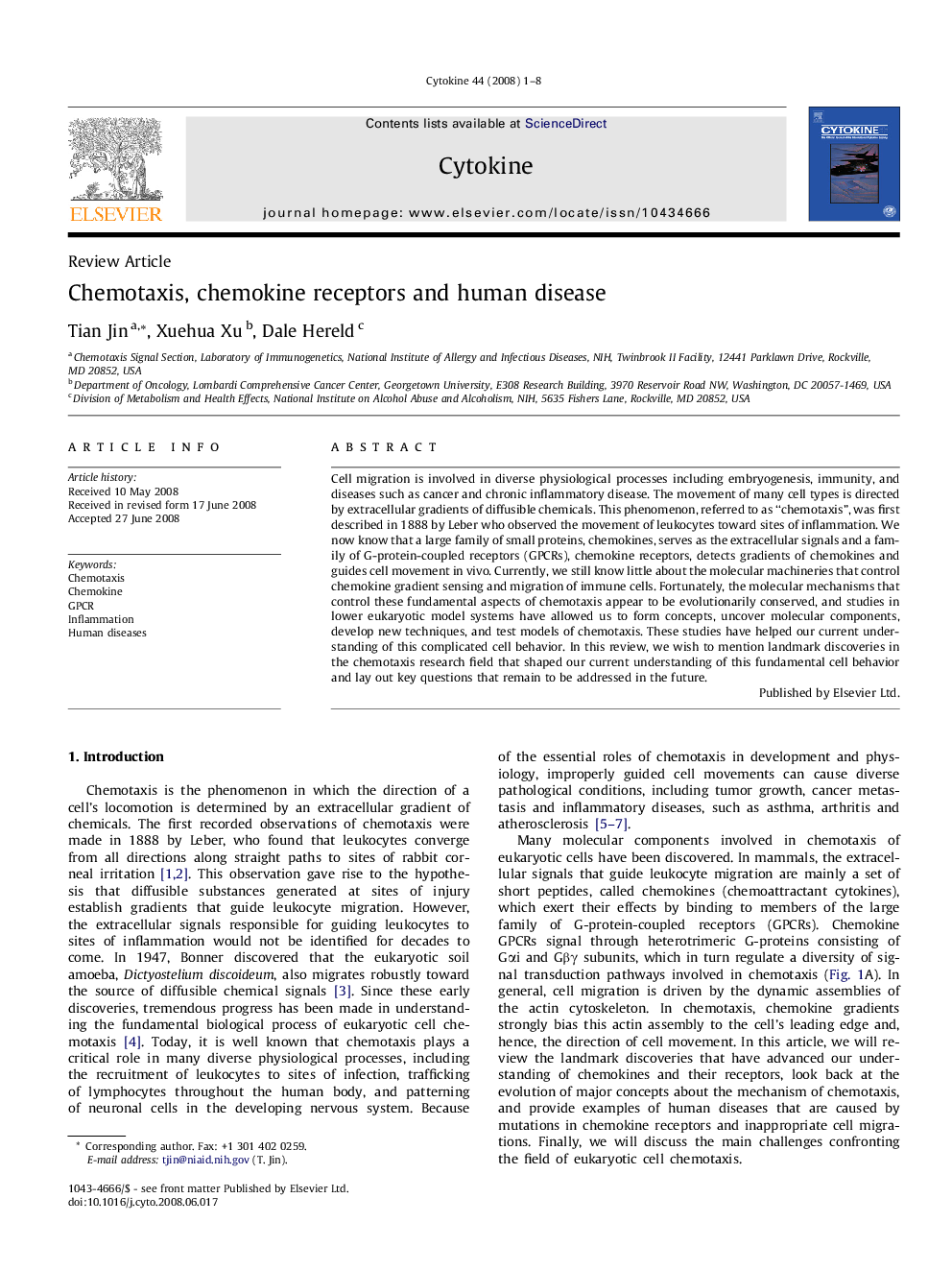| کد مقاله | کد نشریه | سال انتشار | مقاله انگلیسی | نسخه تمام متن |
|---|---|---|---|---|
| 2795392 | 1155323 | 2008 | 8 صفحه PDF | دانلود رایگان |

Cell migration is involved in diverse physiological processes including embryogenesis, immunity, and diseases such as cancer and chronic inflammatory disease. The movement of many cell types is directed by extracellular gradients of diffusible chemicals. This phenomenon, referred to as “chemotaxis”, was first described in 1888 by Leber who observed the movement of leukocytes toward sites of inflammation. We now know that a large family of small proteins, chemokines, serves as the extracellular signals and a family of G-protein-coupled receptors (GPCRs), chemokine receptors, detects gradients of chemokines and guides cell movement in vivo. Currently, we still know little about the molecular machineries that control chemokine gradient sensing and migration of immune cells. Fortunately, the molecular mechanisms that control these fundamental aspects of chemotaxis appear to be evolutionarily conserved, and studies in lower eukaryotic model systems have allowed us to form concepts, uncover molecular components, develop new techniques, and test models of chemotaxis. These studies have helped our current understanding of this complicated cell behavior. In this review, we wish to mention landmark discoveries in the chemotaxis research field that shaped our current understanding of this fundamental cell behavior and lay out key questions that remain to be addressed in the future.
Journal: Cytokine - Volume 44, Issue 1, October 2008, Pages 1–8